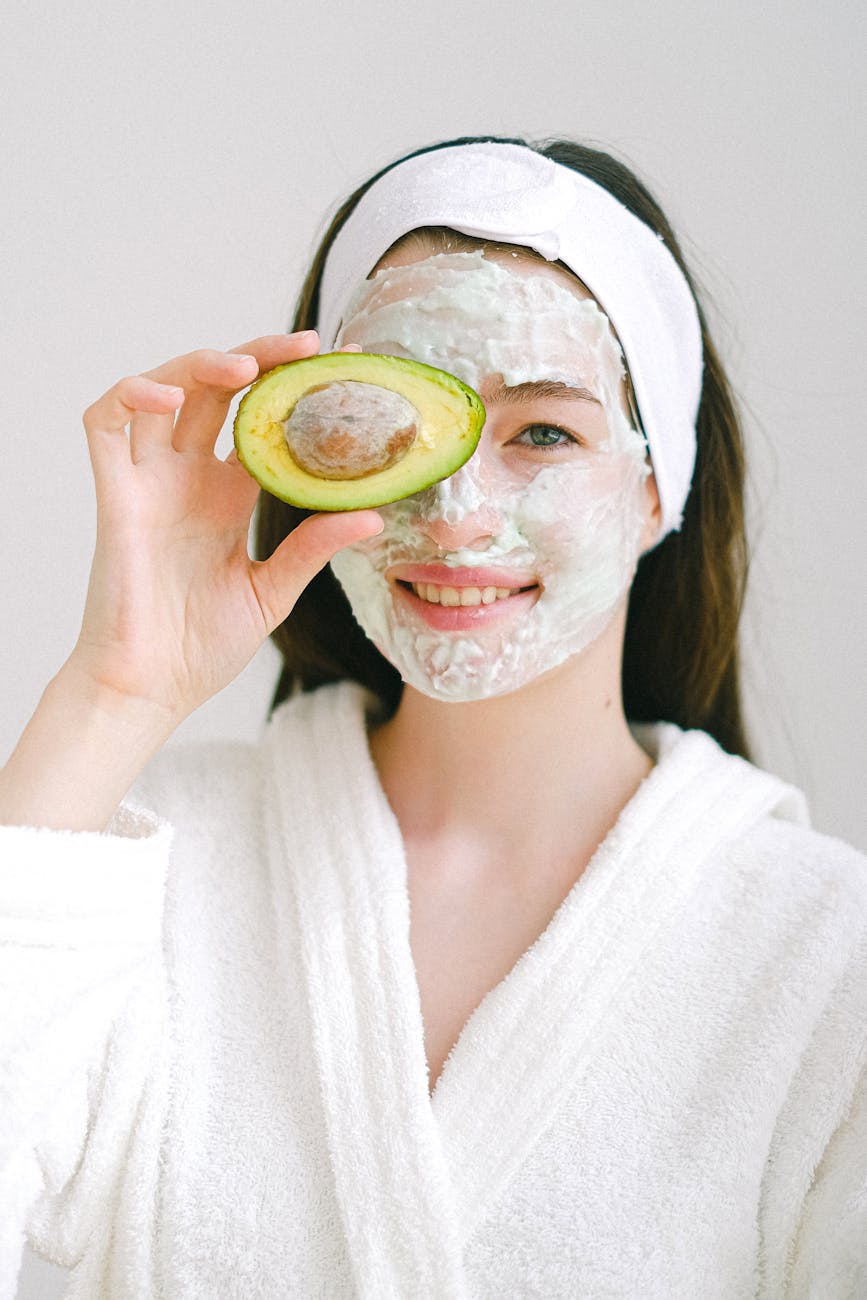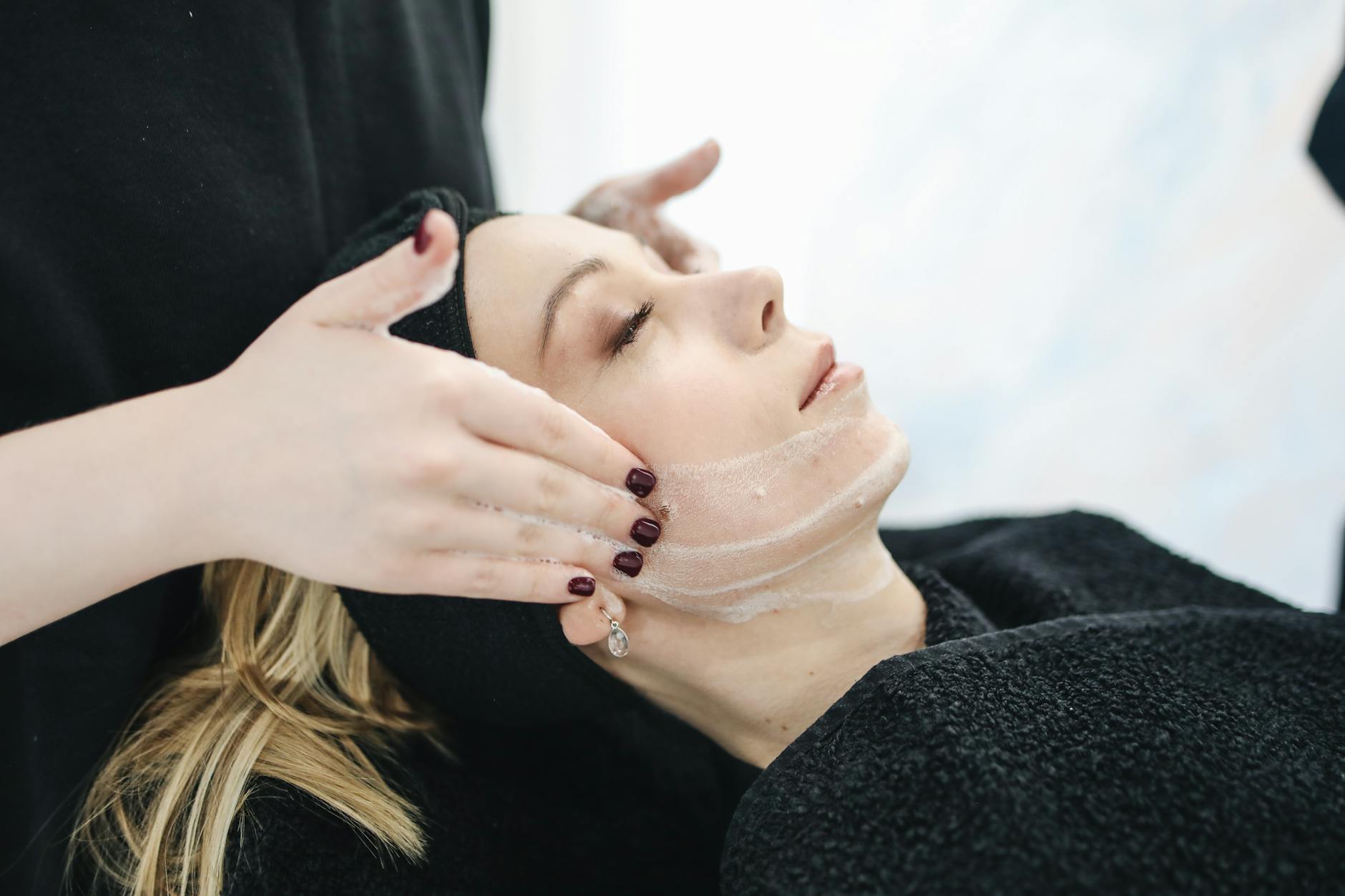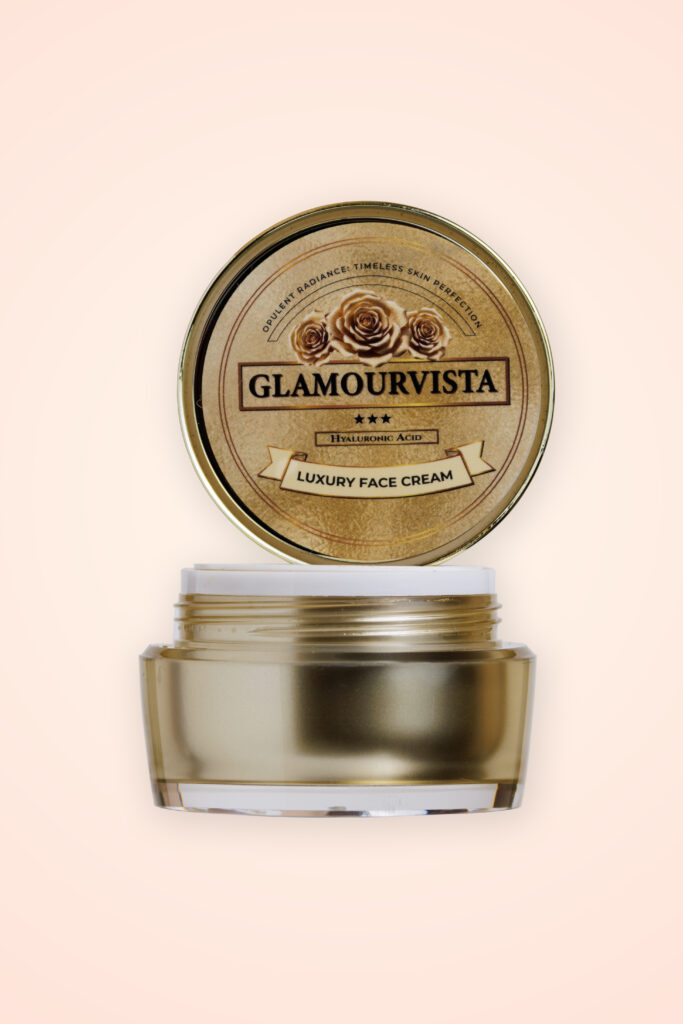Your basket is currently empty!

The Ultimate Guide to Face Creams: Exploring Their Benefits, Choosing the Right One, and Understanding Key Ingredients
Posted by:
|
On:
|
Introduction: The Importance of Face Creams
- Skincare as more than just an aesthetic choice: It’s about health, comfort, and confidence.
- The rise of face creams as essential products in modern beauty routines.
- Historical perspective: How moisturizing and skin-nourishing creams have evolved over centuries.
- Overview of what readers will learn: why face creams are indispensable, how to navigate the endless options on the market, and what ingredients truly make a difference.
Part 1: The Benefits of Face Creams


Chapter 1: Hydration and Moisture Retention
Maintaining adequate hydration is one of the most fundamental aspects of skin health. Beyond merely feeling soft or looking plump, well-hydrated skin is better equipped to perform its critical functions—protecting the body, regulating temperature, and maintaining a smooth, radiant appearance. This chapter explores why water is so essential for skin health, the challenges of moisture loss, and how modern face creams offer targeted solutions.
The Role of Water in Skin Health
Skin, the body’s largest organ, is made up of multiple layers, each with distinct responsibilities. Water plays a vital role in these layers. In the outermost layer, known as the stratum corneum, moisture helps maintain flexibility and ensures that the barrier remains intact. When hydration levels are optimal, the skin appears radiant, feels smooth, and effectively shields against environmental aggressors. Conversely, when the skin is dehydrated, it can become tight, flaky, and more susceptible to irritation, fine lines, and infections.
Maintaining proper hydration is also crucial for cell turnover and repair. Water supports enzymatic activities that help the skin shed dead cells and replace them with newer, healthier ones. This natural renewal process slows with age, but consistent hydration can help sustain it for longer. In essence, hydrated skin is not only more comfortable and visually appealing, but also better functioning.
Preventing TransEpidermal Water Loss (TEWL)
One of the skin’s key challenges is retaining moisture against external pressures. TransEpidermal Water Loss (TEWL) occurs when water evaporates from the skin’s surface. Factors such as low humidity, wind, sun exposure, and harsh cleansers can accelerate TEWL, leaving the skin parched and vulnerable. Without proper intervention, TEWL can lead to chronic dryness, sensitivity, and even premature aging.
Face creams are designed to combat TEWL by forming a barrier that slows evaporation, allowing the skin to retain its natural moisture for longer. They can also attract and bind additional water to the skin, ensuring a continuous supply of hydration.
Different Types of Moisturizers
Face creams often combine various types of moisturizing agents to address different needs. The three primary categories are humectants, emollients, and occlusives, each serving a specific function in maintaining hydration.
- Humectants:
These water-binding ingredients draw moisture from the environment or deeper layers of the skin into the stratum corneum. Common humectants include hyaluronic acid, glycerin, and urea. They’re especially effective for dehydrated skin, as they increase the overall water content, giving the skin a plump, refreshed appearance. - Emollients:
Emollients are responsible for smoothing the skin’s surface. By filling in the gaps between skin cells, they create a softer, more even texture. Natural oils (such as argan and jojoba) and butters (like shea butter) are common emollients. These ingredients are particularly beneficial for rough or dry patches, leaving the skin feeling velvety and comfortable. - Occlusives:
Occlusives form a protective barrier over the skin, effectively sealing in moisture and preventing water loss. Petrolatum, lanolin, and certain waxes are typical occlusive agents. While occlusives may feel heavier on the skin, they are indispensable for those with severe dryness or compromised skin barriers. By locking in hydration, they ensure the skin remains nourished and protected, even in harsh environments.
Case Studies: Consistent Use of Hydrating Face Creams
To understand the transformative power of hydration, consider real-world examples. Individuals who incorporated a daily hydrating face cream into their routines reported notable improvements within weeks.
In one case, a woman with chronic dryness found that after two months of using a cream rich in humectants and emollients, her skin felt consistently softer, her makeup applied more smoothly, and she experienced fewer breakouts associated with overcompensation from oil glands.
Another case involved a man living in a cold, windy climate who had dealt with redness and irritation. By using an occlusive cream each night, he noticed that his skin barrier felt stronger, his redness diminished, and he was no longer waking up with flaky patches.
These stories highlight the importance of consistency and choosing the right combination of ingredients to address specific skin concerns.
The Relationship Between Hydrated Skin and a Youthful Appearance
Hydration doesn’t just make the skin feel better—it also makes it look younger. Plump, well-hydrated skin reflects light more evenly, giving it a natural glow. Fine lines and wrinkles become less pronounced as the skin’s surface is smoother and more supple.
Furthermore, the improved elasticity that comes with proper hydration helps the skin resist creasing and sagging over time. While no single product can stop the aging process, a well-formulated face cream that maintains hydration can delay the visible signs and keep skin looking its best for years to come.
In short, keeping the skin adequately moisturized is a simple yet profoundly effective step in achieving and preserving a radiant, youthful complexion. Through their ability to attract, hold, and lock in moisture, face creams offer a powerful tool for anyone looking to maintain healthy, vibrant skin.

Chapter 2: Strengthening the Skin Barrier
The skin barrier plays a critical role in maintaining the health and appearance of our skin. Often referred to as the stratum corneum, the outermost layer of the skin is a carefully structured shield. It protects against environmental aggressors, prevents moisture loss, and supports the skin’s ability to repair and renew itself. Understanding how the skin barrier functions and the ways face creams help maintain and restore it can lead to healthier, more resilient skin.
The Skin Barrier’s Function: Keeping Harmful Substances Out and Essential Nutrients In
Imagine the skin barrier as a brick-and-mortar wall. The “bricks” are the skin cells, and the “mortar” consists of lipids—ceramides, cholesterol, and fatty acids—that hold these cells together. This wall is the body’s first line of defense, keeping pollutants, bacteria, and irritants at bay while simultaneously locking in moisture and nutrients. A healthy barrier ensures that the skin remains supple, hydrated, and protected.
When the barrier is intact, it not only blocks harmful substances but also helps retain the water and nutrients the skin needs to function optimally. This balance is key to maintaining smooth, comfortable skin. However, when the barrier is compromised, issues such as dryness, redness, sensitivity, and inflammation arise. These problems make the skin less effective at protecting itself, leading to a cycle of discomfort and irritation.
How Creams with Ceramides, Cholesterol, and Fatty Acids Repair a Weakened Barrier
The good news is that the skin barrier can be restored. Face creams designed specifically to strengthen the skin barrier often contain a blend of ceramides, cholesterol, and fatty acids—the very lipids that naturally occur in healthy skin. By replenishing these essential components, these creams help repair cracks in the “mortar” of the skin’s wall.
- Ceramides: These are waxy lipid molecules that make up over 50% of the skin’s barrier. They help keep the skin hydrated and protect it from irritants. Adding ceramides through a topical cream ensures the barrier remains strong and resilient.
- Cholesterol: This lipid works alongside ceramides to maintain the barrier’s structure. Together, they improve the skin’s elasticity and its ability to retain moisture.
- Fatty Acids: These molecules provide additional support by nourishing the skin and enhancing its flexibility. They also improve the skin’s texture, making it smoother and more even.
By including these critical components, barrier-repair creams mimic the skin’s natural composition, making them exceptionally effective at reinforcing the skin’s defenses.
The Link Between a Strong Barrier and Reduced Sensitivity, Redness, and Irritation
A healthy skin barrier is crucial for reducing sensitivity and preventing flare-ups. When the barrier is intact, it blocks out irritants that could cause redness, itching, and discomfort. Without these triggers penetrating the skin, sensitivity issues tend to diminish.
Additionally, a well-functioning barrier ensures that the skin’s natural moisture levels are maintained. When the skin is properly hydrated, it feels smoother and less reactive to external factors such as weather changes, pollution, or harsh skincare ingredients. Over time, a stronger barrier helps normalize the skin’s condition, making it less prone to irritation and more capable of handling environmental stressors.
Real-World Examples: Consumers Who Overcame Chronic Dryness and Sensitivity Through Barrier-Repair Creams
Many people struggle with skin that feels perpetually dry, tight, or red. For some, even minimal exposure to the elements can cause a stinging sensation or visible irritation. In these cases, barrier-repair creams have proven transformative.
- One individual, who had experienced persistent dryness after years of using harsh exfoliants, found relief within weeks of switching to a ceramide-rich cream. Her skin began to feel softer, the tightness subsided, and redness diminished significantly.
- Another customer with a history of eczema discovered that a cream containing ceramides and fatty acids helped soothe her irritated patches and prolonged the periods between flare-ups. By using the cream consistently, she noticed smoother, calmer skin that no longer felt constantly inflamed.
- A man dealing with redness from daily shaving found that applying a barrier-strengthening cream afterward helped reduce irritation. Within a month, his skin appeared healthier, and the post-shave redness and discomfort were barely noticeable.
These real-world experiences highlight how targeted creams can not only restore the skin barrier but also improve overall quality of life for those dealing with chronic dryness and sensitivity.

Chapter 3: Anti-Aging Properties
Aging is a natural process, but the visible signs—such as fine lines, wrinkles, and sagging skin—are something many people strive to delay or minimize. As we age, our skin undergoes changes that affect its texture, firmness, and overall appearance. In this chapter, we’ll explore the biological reasons behind aging skin, the powerful ingredients that counteract these effects, and the impact that consistent use of anti-aging face creams can have over time.
What Happens to Skin as It Ages
Several factors contribute to the changes we see and feel as our skin matures.
- Loss of Collagen: Collagen is a protein that provides structure, strength, and elasticity to our skin. In youth, collagen levels are abundant, giving the skin a firm, plump, and resilient quality. However, starting in our late 20s or early 30s, collagen production begins to decline. By the time we reach our 40s and 50s, this reduction is more noticeable, and the skin starts to lose its firmness and elasticity.
- Slower Cell Turnover: When we’re young, our skin cells renew themselves every 28–35 days. As we age, this process slows down significantly. Dead skin cells linger on the surface longer, making the skin appear dull, uneven, and less vibrant. This reduced turnover also means that damage—like dark spots and fine lines—takes longer to fade.
- Reduced Hydration: With age, the skin’s ability to retain moisture decreases. The production of natural oils and hyaluronic acid diminishes, leaving the skin prone to dryness and dehydration. This lack of hydration not only makes wrinkles more noticeable but also contributes to a rougher texture and a more fragile appearance.
Ingredients That Combat Aging
Modern anti-aging creams are formulated with advanced ingredients that address these challenges directly. By choosing products with proven actives, it’s possible to slow down the visible effects of aging and maintain healthier, more youthful-looking skin.
- Retinoids:
Retinoids, derived from vitamin A, are among the most well-researched and effective anti-aging ingredients available. They stimulate collagen production, which helps restore skin’s firmness and elasticity. Retinoids also accelerate cell turnover, which smooths fine lines, fades dark spots, and refines texture. Over time, consistent use of retinoids can make the skin look fresher, tighter, and more even-toned. - Peptides:
Peptides are small chains of amino acids that signal skin cells to produce more collagen and elastin. By sending these messages to the skin, peptides help improve elasticity, reduce the appearance of wrinkles, and maintain a youthful structure. Peptides are gentle and versatile, making them an excellent choice for those who want effective anti-aging benefits without the irritation sometimes associated with stronger ingredients. - Antioxidants:
Antioxidants like vitamin C, vitamin E, and ferulic acid help protect the skin from damage caused by free radicals—unstable molecules generated by UV exposure, pollution, and stress. Free radicals can break down collagen and lead to premature aging. By neutralizing these harmful molecules, antioxidants prevent further damage, brighten the complexion, and support the skin’s natural repair processes.
How Consistent Cream Usage Minimizes Fine Lines, Improves Elasticity, and Enhances Skin Firmness Over Time
Anti-aging results don’t happen overnight, but with consistent use, the benefits become increasingly visible. Daily application of a cream containing retinoids, peptides, and antioxidants helps rebuild collagen levels, smooth out fine lines, and firm up sagging skin. Hydrating ingredients in the cream restore moisture, plumping up the skin and reducing the appearance of wrinkles.
Over weeks and months, the cumulative effect of these active ingredients leads to a brighter, more even complexion. Skin texture becomes smoother, elasticity improves, and the face takes on a firmer, more lifted look. The long-term commitment to a quality anti-aging cream allows the skin to rebuild and maintain its youthful structure, resulting in more lasting improvements.
Testimonials and Dermatologist Insights
Real-world feedback from users and professionals underscores the effectiveness of anti-aging creams.
- One user in her late 40s reported that after six months of using a peptide-based moisturizer, she noticed a significant reduction in the depth of her crow’s feet. Her skin felt more supple, and she gained renewed confidence in her appearance.
- Another user shared that her consistent application of a retinol-enriched night cream not only reduced fine lines around her mouth but also faded age spots that had begun to appear on her cheeks. She described feeling more comfortable going makeup-free and enjoying compliments on her glowing skin.
- Dermatologists frequently cite the importance of starting anti-aging care early and using products with scientifically supported ingredients. According to one board-certified dermatologist, incorporating a retinol or peptide cream by the mid-30s can help slow collagen loss and maintain skin resilience, making it easier to preserve a youthful appearance as years go by.
These testimonials and professional endorsements illustrate the powerful impact anti-aging creams can have, not only on the appearance of the skin but also on the confidence and self-esteem of those who use them.

